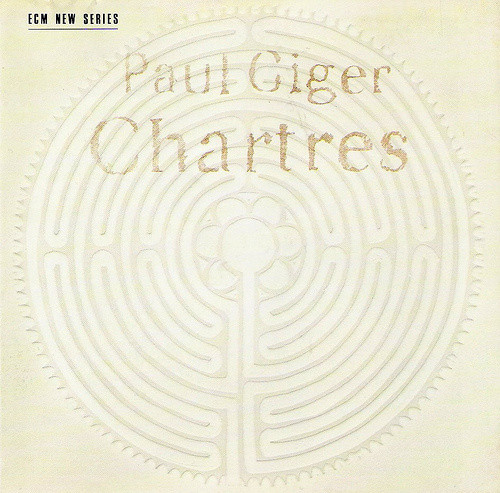Paul Giger violin
Recorded at summer solstice 1988 inside the crypt and upper church of the cathedral of Chartres
Engineer: Peter Drefahl
Produced by Manfred Eicher
ECM new series 1386
Describing the music of Paul Giger is like trying to draw with one’s eyes closed: one can only go so far before the shapes begin to break down. Each section of this chiefly improvised work was recorded in respective titular areas of the cathedral at Chartres. Giger possesses a uniquely intimate understanding of the violin, which he brings to every movement of his playing. The alternating ferocity and gentility with which he approaches his instrument is both inspired and inspiring. Melodically these pieces are incredibly robust, singing and shouting and praying their way through a virtuosic journey. Yet the music is anything but pretentious. Giger paints a veritable image of the cathedral, hollowing it from the inside out with the edge of his bow, respecting the space that gives his music life.
“Crypt I+II” arises from a breath, played sul ponticello at the threshold of clarity. Occasionally these whispers vocalize into declarations of a chromatic and hymnic theme, the overtones of which Giger molds with great skill. After this glorious introduction the violin trembles as Giger grazes the strings with his fingertip, coaxing multiphonic echoes from their solace. In “Crypt III” he presents the theme more straightforwardly and with pronounced regularity. A touch of vibrato and a hint of emotional vulnerability add color to an otherwise sacred song. Giger lays down a sort of bass line to his ethereal melody. Tensions build into linear after-effects; the music takes a liturgical turn. As it slows and grows quieter, it draws itself out into a consonant spread, which can only be resolved by our silent awe. This is followed by “Labyrinth,” a superbly played dance akin to Irish fiddling that lapses just as quickly into a keening lamentation. This bipolarism continues as Giger puts his extended technique beautifully to work midway through the piece, playing the violin percussively on the fingerboard while tapping the strings with his bow for a harmonic overlay. This passage requires careful attention to appreciate the subtleties of the “micromusic” being performed. In “Crossing” we encounter the same thematic material that began the album in ascendant reformation. Giger launches into an astonishing run as his fingers flit through octaves, halting at regular intervals to relate the theme underlying them at every turn. Every attempt presses higher, stretching the possibilities of the violin’s harmonic register. Additional voices offer dense harmonies that seem to depend from the cathedral’s lofty rafters for as long as they can in order to convey the ecstasy of their heavenly desire. The strings pull at one another, one wishing to rise and the other to remain earthbound, so much beauty is there to tempt them in either direction. Ultimately, we remains in a space neither terrestrial nor empyreal. The theme returns, a bird circling overhead, its eyes always on the ground below, locking on us, its observers. This crosses over into one of the most aching musical reveries ever conceived and recorded. The final movement, “Holy Center,” is also the most enigmatic. Locking into the cathedral’s “key note,” its resonance is self-nourishing, and builds in vocal density through soul and body.
As gorgeous as it is, we can never forget that such music exists solely in the realm of the human, and that perhaps it only means something in the realm of the human. Yet this is precisely what imbues it with such spiritual significance. Its ephemerality lends heartwrenching impact, so that one almost wants to weep in its thrall. This is music created for its own sake, if not forsaken for its own creation.
